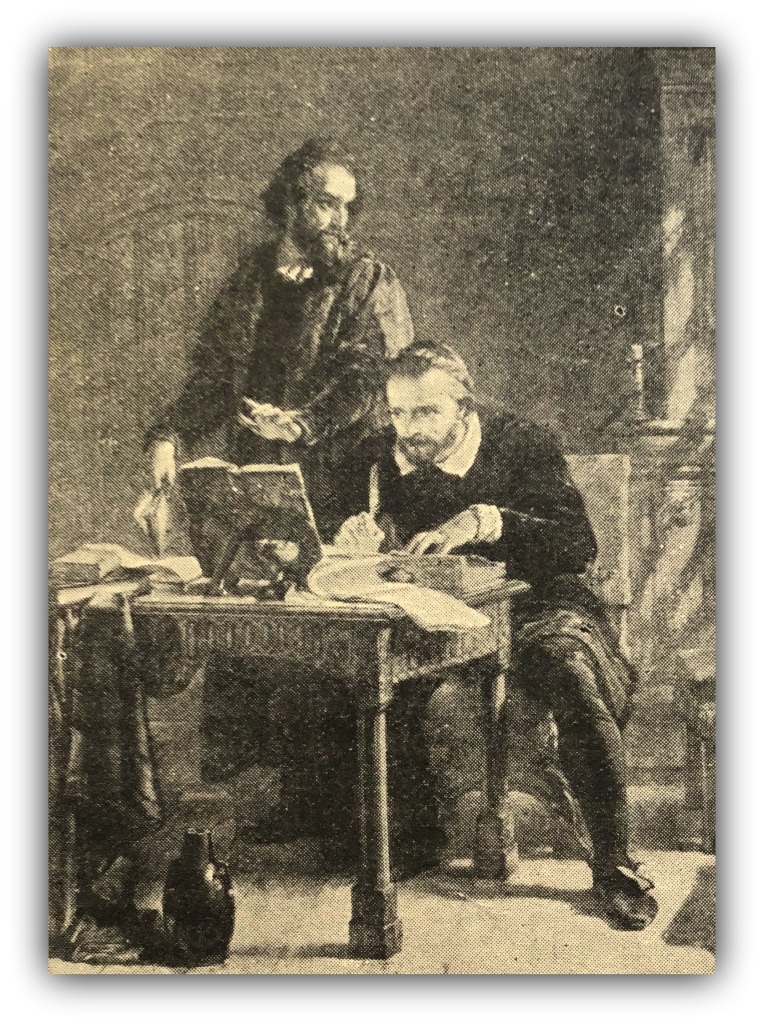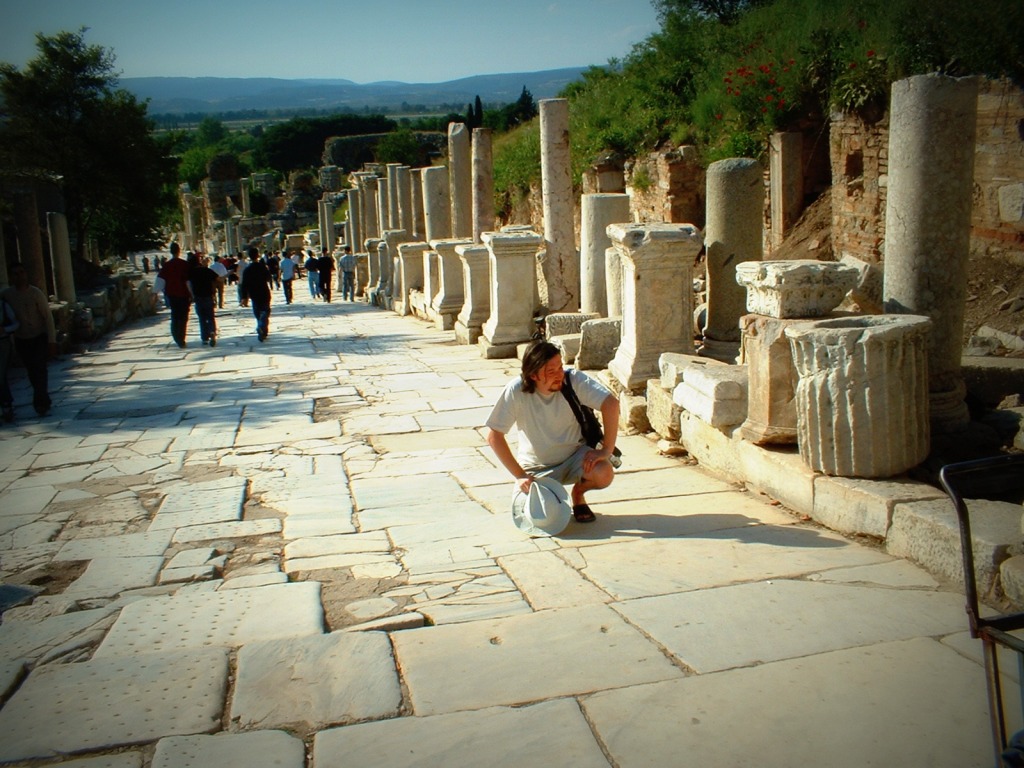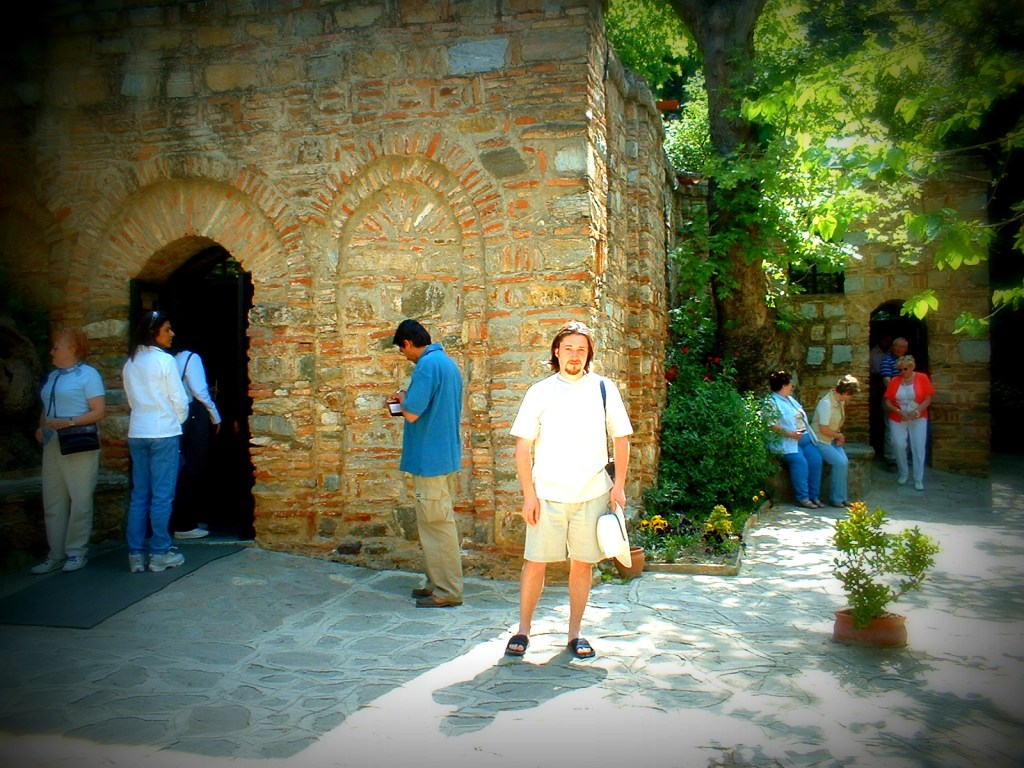Archive for December, 2023
William Tyndale’s military translation of Luke 2: 13
Posted by simon peter sutherland in Christmas, Church of England, The Bible, Theology on December 23, 2023

At this time of year it is a regular feature to hear passages from Luke’s gospel read aloud. Most of the time these days it is read from the NIV, ESV or some other modern translation. Yet with these translations we often miss so much.
For me personally, I’m traditional I like old Bible translations. For me, few modern translations read like authoritative Scripture. Tyndale’s 16th century translation however is a whole different ball game. It is one of the greatest English translations ever produced. No other translation has so impacted the English language as his.
And in his 1534 New Testament, Tyndale translates Luke 2: 8-13 this way,
“And there were in the same region shepherds abiding in the field and watching their flock by night. And lo: the angel of the Lord stood hard by them, and the brightness of the Lord shone round about them, and they were sore afraid. But the angel said unto them: Be not afraid. For behold, I bring you tidings of great joy that shall come to all people: for unto you is born this day in the city of David, a saviour which is Christ the Lord. And take this for a sign: ye shall find the child swaddled and laid in a manger. And straightway there was with angel a multitude of heavenly soldiers, lauding God and saying: Glory to God on high, and peace on the earth: and unto men rejoicing.”
(TYNDALE’S NEW TESTAMENT, 1534. The Gospel of St Luke. Chapter Two. A modern-spelling edition by David Daniell)
Note here something very distinct. In verse 13 Tyndale employs a military translation of the word normally translated “host”. Tyndale uses the English word “soldiers”.
This word is also used in the 1599 Geneva Bible, no doubt borrowing the idea from Tyndale. This is very interesting because it can be verified by the Greek.
According to Strongs (G4756) the Greek word means “an army; from the base of G4766, as encamped”. This is intriguing since the angelic reference is figuratively used. According to John Gill, the size of the multitude could be “innumerable; there are thousands, ten thousands, and ten thousand times ten thousand of them.”
It is quite spectacular to imagine thousands of soldiers declaring “peace on earth”, and good will.
Translations such as the KJV, RSV, NIV, ESV, ASV, use the word “host” which I think is found wanting. Tyndale’s military imagery is much more profound and demonstrative of the conflict between man and God being resolved in the life, death and resurrection of Jesus Christ. This is the heart of the Christmas story and although we often see the nativity story in a sweet fashion it is not so sweet. Jesus Christ was born to die and His enemies would one day take those hands and feet and pierce them with Roman nails.
What began with good news, of peace on earth and good will to all men concluded with Christ’s death making permanent satisfaction for sin and justification by His resurrection.
Recently while reflecting on the permanency of the gospel I was standing looking out at the vast open sky. The clouds, stars and the moon were all clearly visible. Down on earth people were going about there busy business and doing their thing, but the moon remained, unmoveable and unchanged. The gospel is like that, it does not and cannot change. It abides. The world changes, people change but the word of the Lord does not change. Likewise, the God who inspired it does not change either. He remains, He will not break His promises and regardless of the whims and babblings of this world, the Scripture cannot be broken.
This Christmas, remember the truth of the gospel and if you follow Christ remember that there is a multitude of heavenly soldiers on your side and if God is with you who can be against you?
I believe the Virgin Mary was not sinless
Posted by simon peter sutherland in Census of Luke, Christmas, Theology on December 4, 2023

Recently I went to see the new movie Journey to Bethlehem. A musical inspired by the events surrounding the birth of Jesus.
Mary does sing in Luke 1: 46-55.
While I found the movie entertaining and enjoyable to watch, I didn’t agree with it all but I came to notice the very distinct representation of Mary as human, not sinless. As some of you may know the Roman Catholic Church upholds a doctrine that claims Mary was not subject to original sin. Although I don’t particularly have a problem with believing that Mary did not practice sin, I do have a problem with the false claim that Mary was sinless.
While there are complexities within the doctrines upheld within Roman Catholicism, Eastern and Oriental Orthodoxy, it should be stated that there is not a single verse in the Bible that claims Mary was “sinless”. In Luke 1: 47 Mary sings ‘my spirit rejoices in God my Saviour’.
If Mary was “sinless” she would not need a Saviour.

Many years ago I visited Ephesus and also the house of the virgin Mary. This house is way up in the mountains and was discovered in the 19th century and is believed to be the place where the Apostle John took Mary as instructed by Jesus in John 19: 25-27.
I like many people sat and pondered upon what the mother of Jesus may have been like. What did Mary look like, how did she talk, what stories could she tell?
Luke 2: 19 says that Mary cherished her memories and stored them in her heart, so I assume Luke’s gospel tells us all we need to know. That being said I understand the nativity texts in Luke contain feminine uses of Greek meaning that many verses could actually contain her own hand written testimony. Thus her own statement in Luke 1: 47 affirmed that Mary was not without original sin.
Likewise 1 John 1: 8 states that ‘if we say that we have no sin, we deceive ourselves and the truth is not in us‘ and that verse does not exclude Mary. After all it was written by the man who Jesus gave instructions to take Mary into his own home so Mary may have even read the letter when John wrote it. After all, John is believed to have been an older man when he wrote his letter, so Mary would have still been present with him as instructed by Christ.
I believe this point and Luke 1: 47 disproves the false claims of Roman Catholicism.